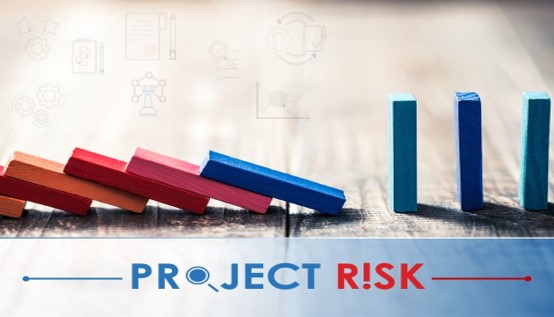INTRODUCTION TO RISK MANAGEMENT
- Definition, Objective, and Purpose
- Role of Project Risk Management
- Good Risk Management Practice
- Critical Success Factors
- Risk Management Life Cycle
PRINCIPLES AND CONCEPTS
- Individual Risks and Overall Project Risk
- Stakeholder Risk Attitudes
- Iterative, Communication, and Responsibility
- Risk Management Processes
STRATEGY AND PLANNING
- Perform a preliminary document analysis.
- Assess project environment for threats and opportunities.
- Confirm risk thresholds based on risk appetites.
- Establish risk management strategy.
- Document the risk management plan.
- Plan and lead risk management activities with stakeholders.
RISK IDENTIFICATION
- Conduct risk identification.
- Examine assumption and constraint analyses.
- Document risk triggers and thresholds based on context/environment.
- Develop risk register.
RISK ANALYSIS
- Analyze risk data and process performance information against established metrics.
- Analyze a project’s general risks.
- Perform a forecast and trend analysis on new and historical information.
- Perform sensitivity analysis.
- Perform risk weighting and calculate risk priority.
IDENTIFY THREATS AND OPPORTUNITIES
- Assess project risk complexity.
- Perform an impact analysis on project objectives.
- Assess project compliance objectives against organizational strategic objectives.
- Empower stakeholders to independently identify threats and opportunities.
PLAN RISK RESPONSE
- Determine appropriate risk response strategy.
- Decide the risk response actions.
- Assess the effectiveness of the risk response actions.
- Illustrate and communicate effectiveness of the risk response strategies.
- Determine the work around.
- Allocate responsibilities.
- Outline an appropriate responsibility matrix for a metricized project environment.
- Re-evaluate organizational risks.
IMPLEMENT RISK RESPONSE
- Execute the risk response plan(s).
- Execute the contingency plan(s).
- Encourage stakeholders to provide feedback on the risk response.
- Evaluate and react to secondary and residual risks from the response implementation.
MONITOR RISKS
- Gather and analyze performance data.
- Monitor residual & secondary risks.
- Provide information required to update relevant project documents.
- Monitor project risk levels.

